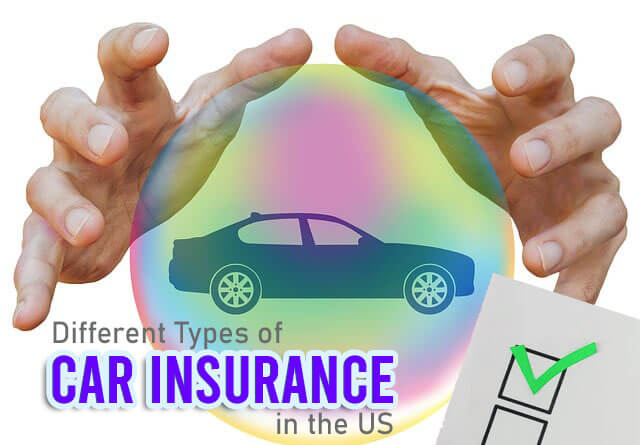A Guide to Different Types of Car Insurance in the USA
Hitting the open road in the USA is synonymous with freedom, but before you cruise into adventure, understanding car insurance is crucial. It's your safety net, your financial shield against the unexpected bumps and scrapes of driving. But with different types of coverage flying around, choosing the right one can feel like deciphering a foreign language. Worry not, fellow motorists, for this guide is your friendly translator, unveiling the different types of car insurance available in the USA and helping you find the perfect fit for your driving needs.

The Big Four: Essential Coverages for Every Driver
These are the mandatory or strongly recommended types of car insurance in most states:
1. Liability Insurance:
- Think: The foundation of your car insurance.
- Protects: You from financial responsibility if you cause an accident and injure others (bodily injury liability) or damage their property (property damage liability).
- Minimum Coverage: Varies by state, but typically ranges from $25,000 to $50,000 per person for bodily injury and $25,000 to $50,000 per accident for property damage.
- Why It Matters: Even a minor accident can result in hefty medical bills and property damage. Liability insurance ensures you don't bear the financial burden if you're at fault.

2. Collision Coverage:
- Think: Protects your car from damage, regardless of who's at fault.
- Covers: Repairs or replacements for your car if it's damaged in an accident, collision with another vehicle or object, or even non-collision events like theft or vandalism.
- Optional, but highly recommended: Especially for new or expensive cars.
- Deductible: Applies, meaning you pay a set amount towards repairs before insurance kicks in. Choose a deductible you can comfortably afford.
3. Comprehensive Coverage:
- Think: Protects your car against non-collision events.
- Covers: Theft, vandalism, fire, weather damage, animal collisions, and other unforeseen events outside your control.
- Optional: Consider your car's value and risk factors in your area.
- Deductible: Similar to collision coverage, you pay a portion of the repair cost before insurance covers the rest.
4. Uninsured/Underinsured Motorist Coverage:
- Think: A safety net against hit-and-run drivers or those without adequate insurance.
- Protects: You and your passengers from medical bills and property damage if you're hit by an uninsured or underinsured driver.
- Optional, but valuable: Provides peace of mind knowing you're covered even in unforeseen situations.
Beyond the Basics: Optional Coverages for Added Security
Once you've got the essentials covered, explore these additional options to tailor your insurance to your specific needs:
- Rental Reimbursement: This covers the cost of a rental car while your vehicle is being repaired after an accident.
- Towing and Labor: Pays for towing charges if your car breaks down or gets stuck.
- Gap Insurance: Bridges the gap between your car's remaining loan balance and its actual cash value if it's totaled in an accident.
- Personal Injury Protection (PIP): Covers medical expenses for you and your passengers if injured in an accident, regardless of who's at fault (available in certain states).
Choosing the Right Coverage: Navigate with Confidence
Remember, the best car insurance is the one that fits your budget, driving habits, and car's value. Here are some tips for choosing the right coverage:
- Understand your state's minimum requirements.
- Research different insurance companies and compare quotes.
- Consider your driving history and risk factors.
- Be honest about your driving habits and vehicle information.
- Inquire about and comprehend the terms and conditions outlined in your policy.
Bonus Tip: Regularly review your policy and adjust coverage as your needs change.
With the right knowledge and a bit of research, you can navigate the different types of car insurance and find the perfect cover to protect your journey. So hit the road with confidence, knowing your car and your finances are shielded from the unexpected bumps along the way!
Happy and safe driving!
